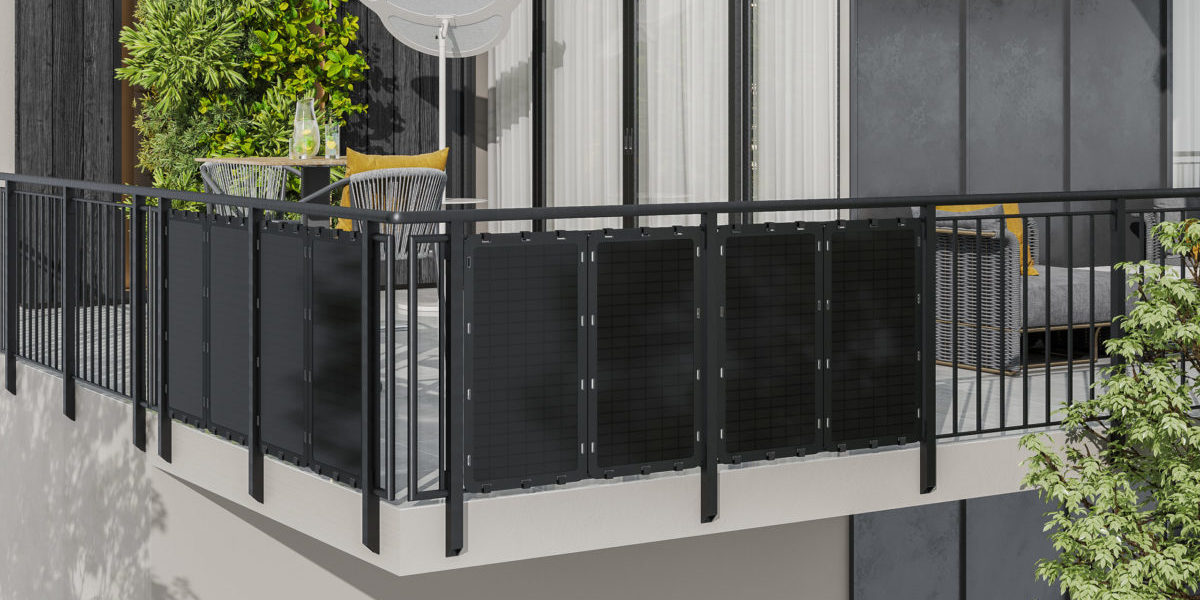From pv magazine Germany
Nobody knows exactly how many plug-in solar modules are currently installed in Germany. What is certain is that their number is increasing every day. In view of the high electricity prices, homeowners without their own roofs are resorting to these devices to lower their energy bills.
In Germany, so-called “balcony solar modules” are currently allowed up to a size limit of 600 W.
“In the best case scenario, a 600 W balcony panel pays for itself after just a few years,” said Hermann Dinkler, an energy expert at the German technical inspection association TÜV. With a shade-free southern orientation, an optimal inclination angle of 35 degrees without shade and 2,000 kWh of electricity consumption per year, a typical 600 W system pays for itself after about five years, according to German institute HTW Berlin.
Nevertheless, there are a few things to consider when installing and using plug-in solar devices, according to the TÜV. Before buying, for example, users should check whether their apartment with a balcony, terrace or exterior wall surface is suitable for these modules, as there must also be an outside socket in the immediate vicinity of where the plug-in solar devices are installed in order to enable the use of the generated electricity.
The photovoltaic balcony system usually consists of one or two solar modules, an inverter, which can be integrated into the module or must be attached separately. According to TÜV, the connected load of the inverter should be a maximum of 600 W. There is also a connection cable that connects the inverter to the outside socket.
“As an option, a suitable ammeter can be attached for the function check. In this way, consumers can check whether the plug-in solar device is working and measure how much electricity is being produced,” said Dinkler.
Furthermore, the association recommends following the instructions provided by the manufacturer during assembly. The plug-in solar devices should be fastened with suitable mounting material, which should ensure the product withstands wind and weather.
“There are different brackets for balcony parapets, facades, or roofs. Consumers should make sure that the components fit the installation site and are supplied by the manufacturer,” Dinkler explained. All building regulations must be observed for the installation and the façade insulation must not be damaged when installing the panels on external walls.
“Only one solar device should be connected to a socket or circuit,” Dinkler said. “Multiple devices should never be connected to a multiple socket in order to avoid overloading and a possible smoldering fire. In order to avoid damage to property or injuries, consumers should only use devices and assembly parts that comply with standards and have been tested for safety.”
TÜV also advises making sure that a modern electricity meter is installed. A Ferraris meter without a backstop could run backward when using photovoltaic balcony modules. The German network operator is responsible for changing the meter, and they usually do this free of charge. In the event of a move, the plug-in solar devices could simply be dismantled and taken to another location.
In addition, the permission of the landlord or property cooperatives must be obtained before assembly.
“As long as no monument protection or building regulations are violated, the installation of a plug-in solar device is generally permitted in Germany,” said Dinkler.
The balcony modules should also be registered with the local grid operator. According to TÜV, many network operators have simplified forms or the option of online registration for plug-in solar devices.
This content is protected by copyright and may not be reused. If you want to cooperate with us and would like to reuse some of our content, please contact: editors@pv-magazine.com.




1 comment
By submitting this form you agree to pv magazine using your data for the purposes of publishing your comment.
Your personal data will only be disclosed or otherwise transmitted to third parties for the purposes of spam filtering or if this is necessary for technical maintenance of the website. Any other transfer to third parties will not take place unless this is justified on the basis of applicable data protection regulations or if pv magazine is legally obliged to do so.
You may revoke this consent at any time with effect for the future, in which case your personal data will be deleted immediately. Otherwise, your data will be deleted if pv magazine has processed your request or the purpose of data storage is fulfilled.
Further information on data privacy can be found in our Data Protection Policy.